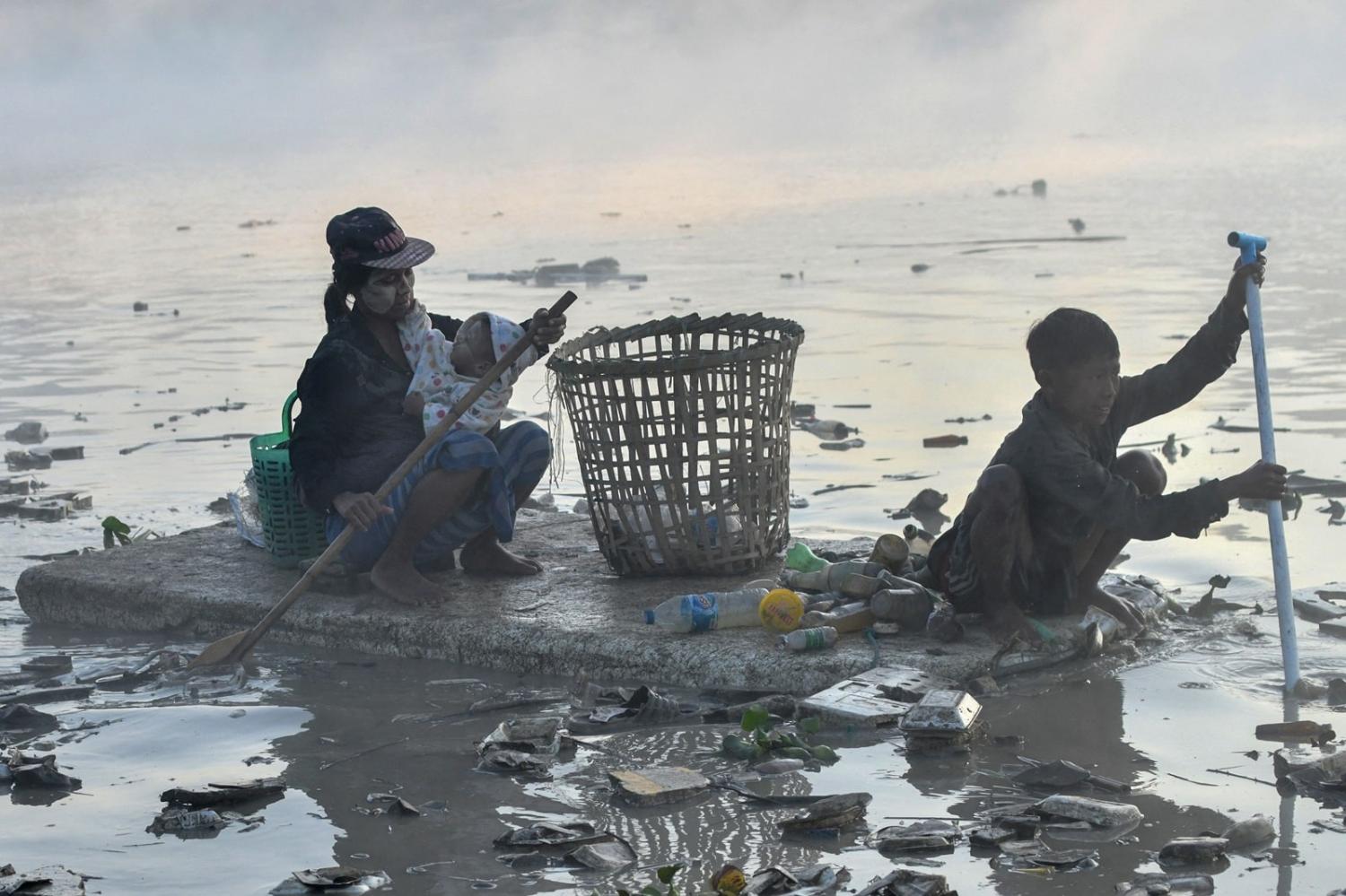Analysis of conflict in Myanmar is dominated by direct data on actual armed combat or its immediate effects: casualty rates, desertions, arson attacks, air strikes, and civilian displacement. These are all important aspects that must be factored into determining the course of the civil war. Analysing political trends – such as the recent purges of officials, the cabinet, and the senior military regime or State Administration Council (SAC), and assassinations of alleged pro-junta arms dealers – are also crucial, if opaque, measures.
Yet analysis on Myanmar should also focus on non-conflict factors to determine possible regime weakening, but more importantly the damaging effects on Myanmar society. Examples include changes to the power sector, migration, and crime as interlinked factors of decline and increasing hardship.
Although the World Bank reported that Myanmar experienced a “fragile recovery” in the first half of 2023 – with the economy stabilising, inflation steadying, and some business reporting growth, especially the garment sector – the prolonged effects of post-coup disorder and the disastrous decision-making of military officers make long-term economic prospects grim. Sean Turnell rightly calls it a “catastrophe”.
One major concern is the power sector. Myanmar’s aim for universal electricity coverage by 2030 now appears impossible, as widespread power cuts affect business, manufacturing, and households. Lengthy power cuts, which had reduced markedly over the past decade, have returned to Yangon. Exacerbating disruptions to electricity generation, petrol prices have increased nearly three-fold, which renders public transport and the distribution of goods prohibitively expensive.
The World Bank’s latest report, In the Dark, concluded, “(m)any of the challenges in the power sector are structural, fundamental, and linked with political instability, conflict, and macroeconomic conditions. They cannot be easily fixed with short-term measures and require longer-term approaches and steady progress based on proper planning over the long-term.” Nevertheless, adding further absurdity to military misrule, the SAC announced that 2023 would be a trial year for the zero-tariff importation of electric vehicles, with more than 2,700 being registered by September.

Conflict and an uncertain economy have contributed to widespread migration since the coup. Internal migration, according to recent studies, has accounted for the majority, part of a long-term trend due to economic factors and climate change, but since 2021 armed conflict has been a major factor. Outward migration has been conspicuous. Many of Myanmar’s middle-class have left for neighbouring countries in numbers hard to quantify with any certainty, but the exodus is markedly different from previous political crises in which those fleeing were largely refugees and migrant workers. Many younger semi-skilled workers are leaving for registered work in Japan and South Korea. State media reported that in October this year, some 30,000 workers in “manufacturing, agriculture, livestock, and construction industries” will travel to South Korea. Large numbers of registered workers in tell-tale company tracksuits are seen daily at Yangon airport, and enrolment in Japanese and Korean language schools has surged. This new wave of migrant workers joins the estimated four million already in Thailand, plus long-standing expatriate communities in Malaysia and Singapore.
As of September this year, all registered migrant workers must remit 25 per cent of their wages through official channels, or be refused further registration. Remittances are a major safety net for families throughout Myanmar. The regime has also announced that migrant workers must pay a ten per cent tax on earnings, and must show official receipts in order to renew certain categories of passports. Increasing capital flight means many of Myanmar’s middle-class are moving their savings into regional banks for safety and in some cases to avoid Western sanctions on Myanmar banks, but the regime has long tentacles to extort workers.
Crime against people and property appears to be on the rise, discernible from regular media reporting and “anecdata” from those inside Myanmar. The Myanmar Police Force (MPF), never paragons of virtuous law enforcement pre-coup, have become increasingly predatory at roadblocks and checkpoints, demanding kickbacks and refusing to investigate crimes unless fees are extracted. The Illegal Trade Eradication Task Force, a multi-agency initiative formed post-coup, is reported daily to be intercepting contraband at major border crossings and at multiple checkpoints, with seizures including timber, unregistered motorbikes, and consumer goods. The SAC purports to be puritanical on legal trade as a mask for systemic corruption.
Narcotics use has surged dramatically since the coup, in a country where drug use was already a major problem. A recent survey by the Myanmar Institute for Strategy and Policy reported higher use of marijuana, cheap amphetamines (or ya ba), ecstasy, cocaine, crystal methamphetamine and ketamine. In some parts of the borderlands under SAC control, the abuse of “happy water” (a powdered concoction of drugs mixed with liquid) has apparently surfaced in recent years.
The senior leadership of the military and their circle of supporters are well cushioned from all these hardships. Optimism around urban “stabilisation” and civilian “resilience” is returning. But this is no normalisation. It is instead a “new abnormal”.

